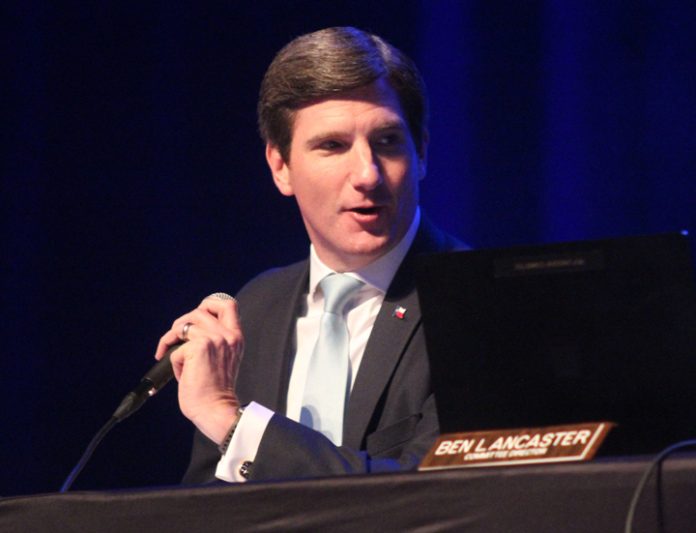The Texas Economic Stabilization or “Rainy Day” Fund is expected to reach its legal limit of $26.38 billion in 2025 and Odessa State Rep. Brooks Landgraf wants to send the overflow back where it came from.
The fund held $10.689 billion from state oil and natural gas severance taxes last Aug. 31 and it’s projected to end this fiscal year with a $13.716 billion balance.
This year’s cap is $20.3 billion based on the very complicated provisions of the 1989 state constitutional amendment that established the ESF.
“It can be easy to overlook those regions that are not home to major metropolitan areas because there are not as many votes there and I think that has been the case historically,” Landgraf told the Odessa American Monday from Austin. “The Legislature can now invest and impact the quality of life where people live, work and raise families in the oilpatch communities.
“This can come in the form of addressing shortages in law enforcement personnel, nursing, skilled workforce training, public education, colleges, health care institutions, transportation infrastructure, accounts used to clean up air and groundwater contamination and property tax relief across the state.
“Every piece of my Texas STRONG (Severance Tax Revenue and Oil and Natural Gas) Defense Fund has a story behind it here in West Texas.”
Landgraf said the legislation would send hundreds of millions of dollars each year to the 32 counties it would designate, including Ward, Winkler, Loving and Ector counties in his 81st District. Through the end of last year, he also represented Andrews County.
When Landgraf filed House House Bill 2207 and House Joint Resolution 111 in the current legislative session to create the fund, the Republican chairman of the House Environmental Regulation Committee said, a number of House members called wanting to co-sponsor it, even some whose districts lie outside the oil- and gas-producing counties that it would primarily benefit.
“They understand that the communities in the epicenter of energy production need to have a certain standard of living because when Texas takes care of the oilpatch, the oilpatch takes care of Texas,” Landgraf said.
He explained that HB 2207 needs majority approval in the House and Senate and the governor’s signature while HJR 111 requires two-thirds approval in both houses to be placed on the Nov. 7 ballot as a proposed constitutional amendment.
“There’s a great deal of interest in investing in the parts of Texas that have made it so exceptional,” Landgraf said. “Visiting with thousands of my District 81 constituents over the past 12 months, I learned that they wanted me to work on the items included in this proposal.
“We need to take advantage of the opportunities before us and do everything we can for the good of Texas.”
Landgraf said the state’s key energy-producing counties, most of them in the Permian Basin, last year generated 90 percent or more than $9 billion in severance tax revenues. Since 2014, he said, the same 32 counties have accounted for 80 percent of collections for a total of just under $40 billion.




